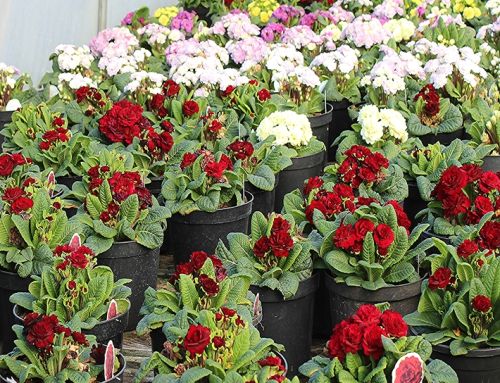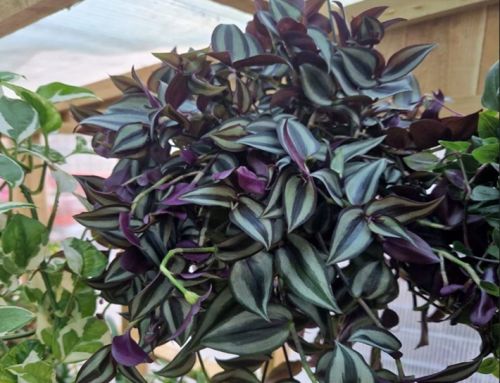
Roscoeas
In our opinion these delightful Roscoeas are nowhere near as widely grown as they should be. Let’s face it, where can you get a woodland or semi shady plant that needs so little care. They can flower for nearly three months of the year. Add to this fresh green foliage (although there are lots of purple tinged ones becoming available nowadays) and you have the perfect plant.
These rather stunning-looking plants, closely related to the Gingers (one of our latest crazes here at farmyard – watch this space) are a must if you have a semi shaded patch. For those who like exotica these fit the bill too…. To some the Roscoea look like an orchid, to others a rather select Iris, but whatever you think of them their flower is rather special. The flowers are unique, having a hooded top petal with three complimentary lower petals.
They were named by an English botanist, James Edward Smith in 1806, to honour his friend William Roscoe, the founder of the Liverpool Botanic Garden.
They do look as if they should be on the fringe of hardiness; however this couldn’t be further from the truth. Yes if they are grown in pots where their roots are subject to the worst of the winter weather they may well die. However if the tuberous root (closely resembling a Dahlia) is planted 12-15cm deep (4-6”) they will thrive. As they establish their roots contract pulling their winter storage organ deeper into the ground as the years go by.
In their natural environment Roscoeas grow in grassland, on screes, or on the edges of deciduous woodland. Happy at altitudes of 1200–5000 metres (4000–16000 ft) they grow all along the Himalayas and into China. 17 species are currently known (More may yet to be found as China opens up).
In their natural setting they are prompted into growth at the start of the monsoon season, emerging later than most plants. Consequently they enjoy late-spring and early-summer rain, really disliking hot dry sunny sites.
As mentioned earlier plant breeding is advancing with these rapidly. The original colour range of pinks, purples and creams is rapidly being added to. Work by some very renowned breeders has produced some amazing forms, venturing into a kaleidoscopic mixture including reds and white often with a mixture of several hues. As flowers have improved foliage colour has improved too. Nowadays there are lots of forms with purple and red tinged leaves. ‘Red Ghurka’, a variable plant, is one of the best of these. Good forms will have red stems and red flowers, for instance.
Heights and flowering times also vary. Some flower early, some late. It is a good idea to have several varieties to prolong the colour period. Watch out too for the ‘thugs’. Some forms are real brutes often growing to a height of nearly 60 cm (2’). They are all quite beautiful.
Nothing beats a woodland garden with a drift of Roscoeas, especially as summer colour is always at a premium in this setting. Combine them with the shorter Hydrangeas for a real summer show. Believe me the neighbours will be well impressed.
Where to plant?
So you have purchased you plants, the next question is where to plant them? In an ideal world they prefer a semi-shaded spot but will tolerate a sunny position if plenty of moisture is present during the summer. Always avoid deep shade. This will make them tall and week leading to floppy pale looking plants.
When you come to plant, place them in a humus rich soil that is free draining. They are remarkable plants. As the plant grows the tubers will pull themselves deeper into the ground. Eventually they will handle all that the winter can throw at them. However if your garden is cold it is best
to mulch for the first two or three years to provide that extra bit of frost protection just in case. Bark can be used as mulch in the woodland setting or try gravel if they are planted in a scree bed.
It is most important to ensure that you remember where you have planted them. They are very late to emerge and it is easy to tread on them or hoe them out by mistake.
It may be prudent to mark where Roscoeas are so that as the spring warmth spurs them into growth your plants are still in one piece. Be patient and water the ground well if April and May are dry. This will help to promote growth.
If you need more plants then these are remarkably easy. Nature is amazing and each year, after growth, the plant naturally splits into several individual tubers. Just dig them up in April and gently tease the roots apart – sounds easy but they are always intertwined. Sometimes washing the soil off to give you a good view helps. Replant or pot surplus for your local gardening group, they will love you!
Anyway to recap, these plants need to be more widely grown. They are easy, free flowering and exotic looking. Well worthy of all but the sunniest driest gardens. Not a problem we have here in Wales. Happy gardening





